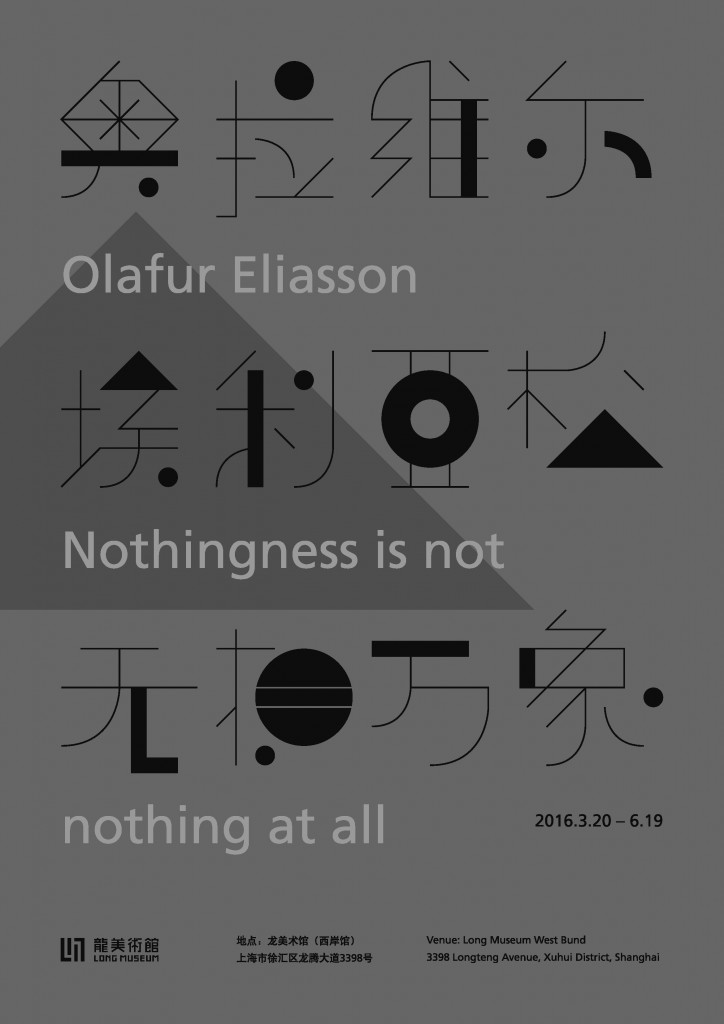
Olafur Eliasson: Nothingness is not nothing at all
Opening: 2016.03.19 5:00 pm
Dates: 2016.03.20—2016.06.19
Address: Long Museum(West Bund)No.3398 Longteng Avenue, Xuhui District, Shanghai
The Long Museum, Shanghai, will present the first survey exhibition of the work of world-renowned Danish-Icelandic artist Olafur Eliasson in a Chinese museum: Nothingness is not nothing at all. Opening to the public on 20 March 2016, the career-spanning exhibition brings together artworks from the artist’s vast oeuvre, which extends from the early nineteen-nineties to the present and includes installations, sculptures, paintings, drawings, and film. A number of new artworks were conceived especially for the Long Museum exhibition, including the large-scale, site-specific installation The open pyramid (2016).
“I wanted to amplify the feeling of the cavernous museum galleries by installing artworks that invite visitors to look inwards, to question how their senses work, and dream up utopias for everyday life. Reality is what we make it to be – it is what we see, sense, think, feel, and do. It is also what things, artworks, spaces, and cities do to us. Art challenges our perspective on the world, turns it upside down, or suggests alternative views – I hope visitors to the exhibition will be inspired to undertake such enquiries. I see the questioning of what is as an opportunity. It makes that which we take for granted negotiable, open to change. “Olafur Eliasson says.
Through a diverse array of artworks, many of which suggest tools for experimental research, the exhibition invites visitors into a space of exploration that encourages their active engagement. The artworks were selected and arranged with particular attention to how they interact with the vaulted, austere concrete museum building designed by Atelier Deshaus. Inspired by the architecture’s combination of rectangular rooms and curved ceilings, Eliasson chose artworks for the exhibition that use basic geometrical principles such as circles, spheres, cubes, or pyramids. Pavilion-like structures create discrete stations within the building, and the capacious interior is divided into individual spaces through precisely curated constellations of artworks.
Many of the works include elemental materials such as stone, ice, water, or light. Series of photographs and colour paintings reflect Eliasson’s approach to studying the phenomenon of colour perception and investigating the world. Optical devices, lenses, mirrors, and glass spheres emphasise the dynamism and subjectivity of visual perception, providing opportunities for visitors to consider their own participation in the construction of what they see. The works direct the viewers’ attention towards the space they inhabit as well as to the act of perceiving it, highlighting their active role in the discovery and co-creation of their surroundings and the world.
The exhibition will be accompanied by a comprehensive catalogue.
(Text / Image: The Long Museum)
More on:
www.thelongmuseum.org